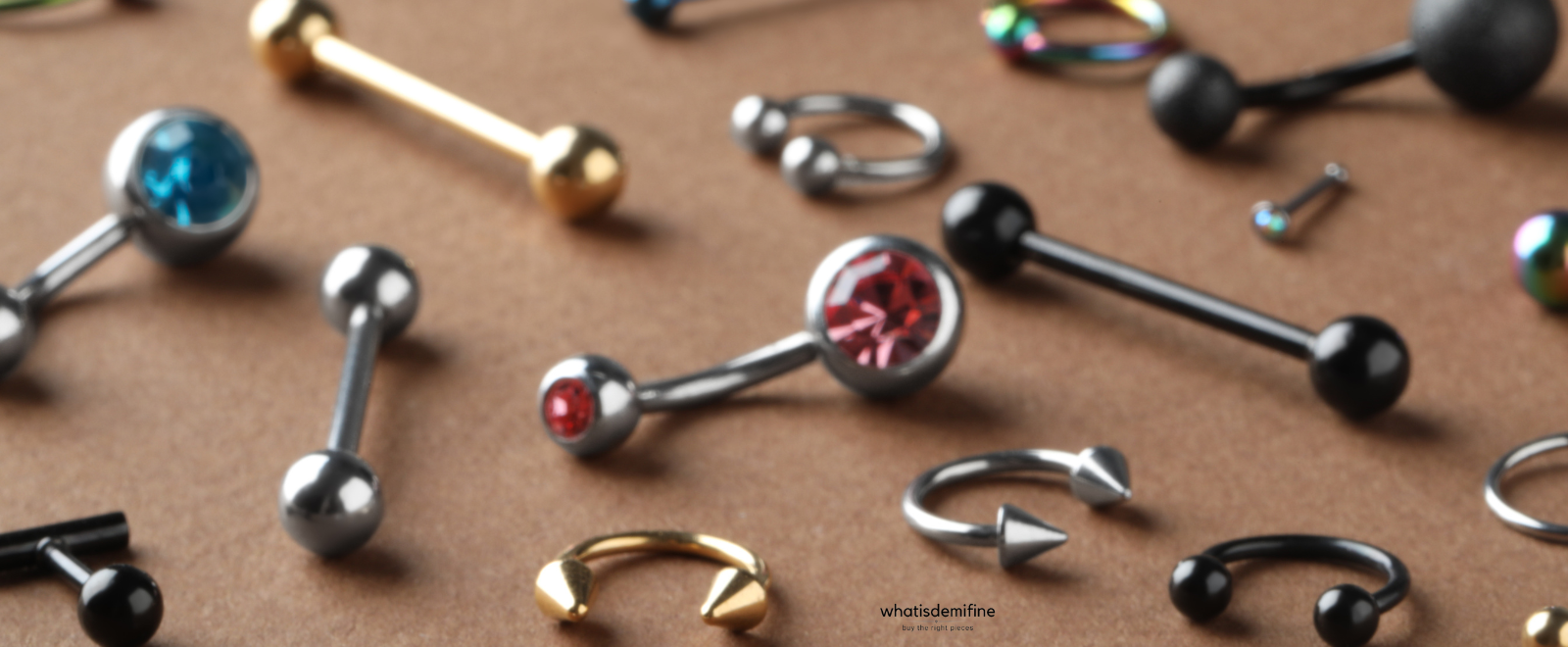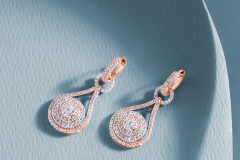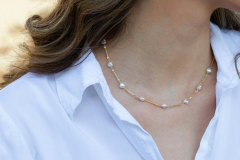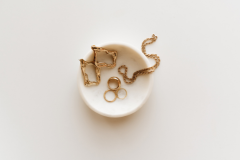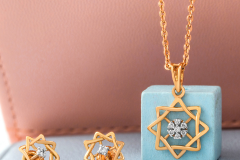Understanding Demi Fine Jewelry Materials: A Guide for Buyers
Jewelry is so much more than an accessory in India—it’s a part of who we are. Whether it’s for a wedding, a gift for a loved one, or simply to add that extra spark to our outfits, we all want pieces that last, look good, and feel just right. But have you ever thought about what’s really behind that stunning shine? Let’s talk about the different base metals used in jewelry and how they’re coated or layered to create those beautiful pieces we love.
1. Brass: The Affordable All-Rounder
Brass is one of the most common metals used in jewelry. It’s made by mixing copper and zinc, giving it a warm, gold-like color.
- Why It’s Loved: Brass is super affordable and can be crafted into intricate designs.
- Things to Keep in Mind: It can tarnish over time and may leave green marks on your skin if worn too often or exposed to sweat.
2. Sterling Silver: Shiny and Durable
Sterling silver is a step up when it comes to quality. It’s made of 92.5% pure silver mixed with other metals (usually copper) for strength.
- Why It’s Loved: It has a gorgeous shine and works beautifully as a base for gold layering.
- Things to Keep in Mind: While it’s hypoallergenic, it can tarnish if not cared for, but a quick polish can bring back its sparkle.
3. Copper: The Rustic Beauty
Copper has a unique reddish-brown color and has been used in jewelry for centuries.
- Why It’s Loved: Its earthy tone gives jewelry a rustic, bohemian vibe.
- Things to Keep in Mind: Copper oxidizes over time, creating a greenish patina, which some people love for its antique look, but others might not.
4. Nickel: Strong but Tricky
Nickel is often mixed with other metals to create durable jewelry, but it’s not without its issues.
- Why It’s Loved: It’s strong, resistant to corrosion, and adds durability to pieces.
- Things to Keep in Mind: Nickel is a common allergen and might not be the best choice if you have sensitive skin.
How Gold Brings It All Together
Base metals are often coated with gold to give them that luxurious look without the hefty price tag of solid gold. Here’s how it’s done:
1. Gold Plating
A thin layer of gold is applied over the base metal (like brass or copper). This is the most budget-friendly option.
- Why It’s Loved: Affordable and looks great for occasional wear.
- Things to Keep in Mind: The thin gold layer can wear off over time, so it’s best to avoid water and perfumes.
2. Gold Vermeil
This is a thicker layer of gold (at least 2.5 microns) over sterling silver. It’s pronounced “ver-may” and is a favorite for high-quality pieces.
- Why It’s Loved: It’s hypoallergenic because of it's sterling silver base.
- Things to Keep in Mind: More durable than regular gold plating, but still needs some care to maintain its shine.
3. Gold-Filled
Gold-filled jewelry has a thick layer of gold (at least 5% of the piece’s total weight) mechanically bonded to a base metal like brass.
- Why It’s Loved: Long-lasting and a great middle ground between plated and solid gold, plus it looks just like solid gold.
- Things to Keep in Mind: It’s a bit pricier than plating but worth it for daily wear.
Quick Tip: If you’re someone who loves wearing jewelry daily, go for sterling silver or gold-filled pieces. They’re durable and won’t irritate your skin. For occasional wear, gold-plated jewelry can be a great choice—just handle it with care!
By understanding the materials and processes behind your jewelry, you can pick pieces that not only look good but also suit your lifestyle and budget. Next time you’re shopping, you’ll know exactly what to look for. Happy accessorizing!


